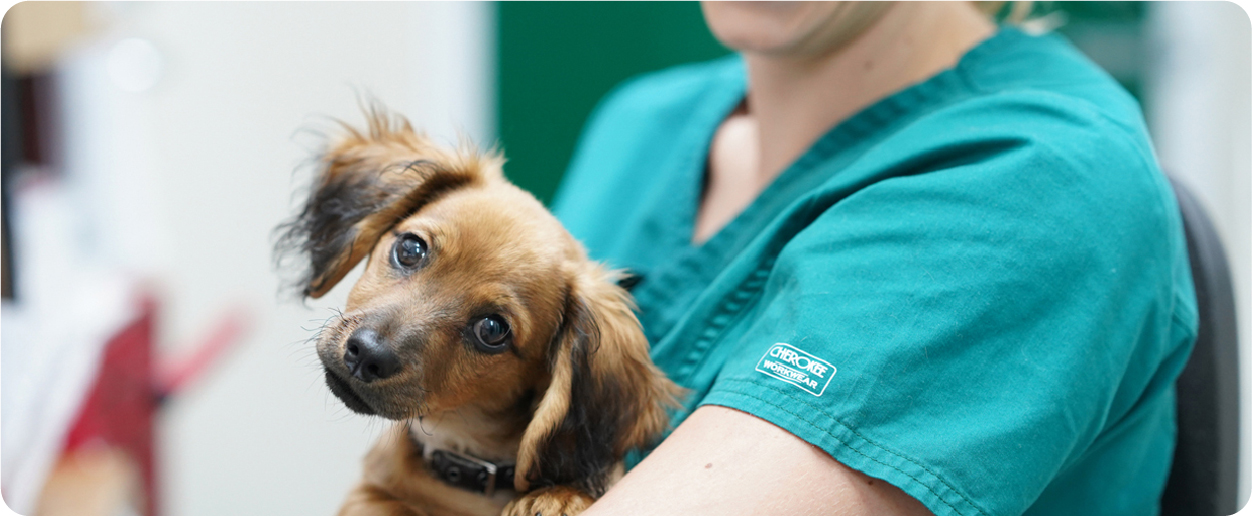Pet neutering has many advantages for both pets and owners, from unwanted pregnancies to the reduced risk of certain types of cancers and health issues. If you are considering neutering your pet, call or book an appointment to see one of our vets to discuss the right timing for this simple surgical procedure.

Pet neutering in Milton Keynes
How does neutering work
Neutering is a surgical procedure is performed under general anaesthesia.
Female neutering:
Female pets are ‘spayed’ which can reduce risks of uterine infection (pyometra) and certain cancers. This procedure involves removing the ovaries and uterus.
- Female Cats – Queens (un-neutered female cats) can be neutered on reaching puberty at approximately five months of age (in some cases this can be done earlier – discuss with one of our Veterinary Surgeons). The most important reason to spay a cat is to prevent unwanted pregnancies. Neutering will also reduce the risks of a uterine infection and certain cancers e.g. mammary tumours. Cat spays are usually performed through an incision in the flank (side), and both ovaries as well as the uterus are removed. Following this the veterinary surgeon will place sutures to close the wound; these will usually need to be removed after ten days at a post operative check.
- Female Dogs – Neutering the bitch prevents later infections of the womb (pyometra), oestrus bleeding and can reduce incidence of mammary cancer. There appears to be a general misconception that having a litter will improve temperament. There is no scientific evidence to support this theory. A spay operation is performed under general anaesthetic, and the uterus is removed from an incision in your dog’s abdomen. Following the surgery, we always like to re-see our patients for a post-operative check after seven to ten days. Bitches are usually neutered between six and twelve months of age, although we recommend delaying neutering in certain larger breeds. We will be more than happy to discuss details with you.
Male neutering:
Male animals are ‘castrated’ which involves the removal of the testicles via two small incisions in the animal’s scrotum. Castration removes the risk of testicular cancer, mating and can reduce some behavioural issues such as sexual aggression.
- Male Cats – Tomcats can be neutered from approximately five months (in some cases neutering can be done earlier and we recommend discussing this with one of our Veterinary Surgeons). Tomcats undergo various behavioural changes following puberty including an increase in territorial behaviour and venturing further from the house which may lead to territorial fights. Fights can lead to infections and abscesses, as well as diseases such as FIV and FeLV which are transmitted through bite wounds and bodily fluids. Finally, neutering will ensure that your tomcat doesn’t add to the already surplus cat population. Cat Castrates are performed under general anaesthetic, and the testes are removed via two small incisions in the cat’s scrotum. It is rarely necessary to stitch this wound as it heals quickly on its own.
- Male Dogs – In male dogs, neutering removes the sexual urge in most cases so that if the dog gets the scent of a bitch in oestrus (heat), he is unlikely to show interest. Castration prevents testicular tumours and sometimes conditions involving the prostate gland. It is also used to control hormonal (testosterone) dependent diseases such as tumours around the anus (anal adenomas). Castration is performed under general anaesthetic, and the testes are removed through one small incision. Following the surgery, we will see your pet back in seven to ten days for a post-operative check. There are many advantages and few disadvantages to having your dog neutered. Dogs and bitches are usually neutered between six and twelve months of age, although we recommend delaying neutering in certain larger breeds. We will be more than happy to discuss details with you.
PetsApp
For all non urgent queries please use PetsApp.
You can use PetsApp by selecting the button on the bottom right of the page.
If you don’t have PetsApp on your smart phone, you can download it via the QR code below:
